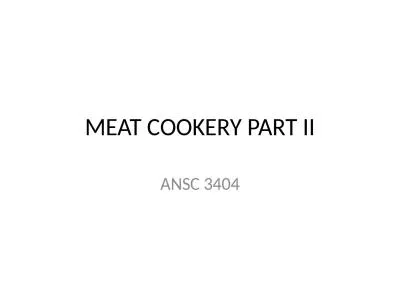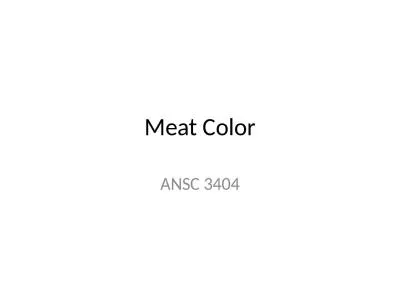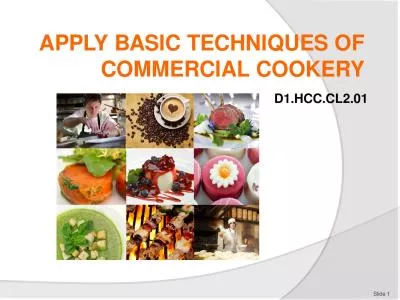PPT-MEAT & MEAT COOKERY
Author : danika-pritchard | Published Date : 2016-09-20
Meat refers to the edible flesh of animals is animal flesh that is eaten as food Composition Meat consist of Water 75 Protein 19 Intramuscular fat 25 Carbohydrates
Presentation Embed Code
Download Presentation
Download Presentation The PPT/PDF document "MEAT & MEAT COOKERY" is the property of its rightful owner. Permission is granted to download and print the materials on this website for personal, non-commercial use only, and to display it on your personal computer provided you do not modify the materials and that you retain all copyright notices contained in the materials. By downloading content from our website, you accept the terms of this agreement.
MEAT & MEAT COOKERY: Transcript
Download Rules Of Document
"MEAT & MEAT COOKERY"The content belongs to its owner. You may download and print it for personal use, without modification, and keep all copyright notices. By downloading, you agree to these terms.
Related Documents

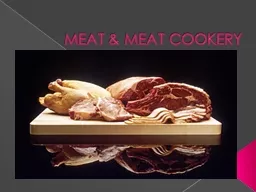
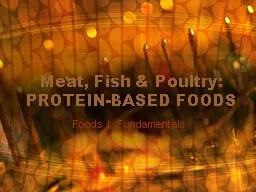
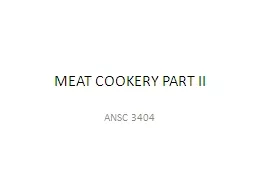
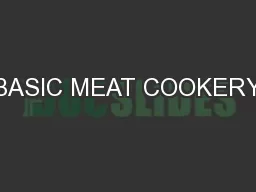
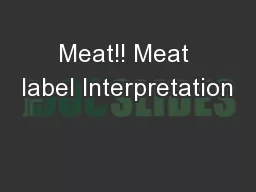
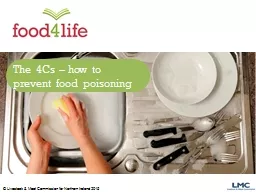
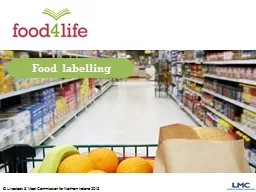
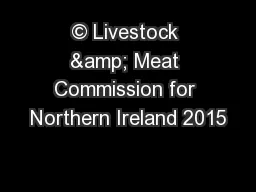
![[READ] - Woodstove Cookery: At Home on the Range](https://thumbs.docslides.com/890164/read-woodstove-cookery-at-home-on-the-range.jpg)
![[READ] - The Roman Cookery Book: A Critical Translation of the Art of Cooking, for Use](https://thumbs.docslides.com/890761/read-the-roman-cookery-book-a-critical-translation-of-the-art-of-cooking-for-use-in-the-study-and-the-kitchen.jpg)
![[DOWNLOAD] - Gordon Ramsay\'s Ultimate Cookery Course](https://thumbs.docslides.com/892010/download-gordon-ramsay-s-ultimate-cookery-course.jpg)
